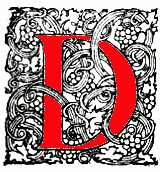

Conrad Dressler. Portrait Bust of William Morris. c. 1886. Plaster. 25 3/4 in. (65.5 cm) high including base. Private collection. Photographs by the owner.

ressler was working on a bust of Willkiam Morris by as early as 1886. In November 1886 A. C. Swinburne wrote his mother and told her about a bust that had recently been made of him: “My bust is thought a very good likeness; it is by a young German sculptor named Dressler, who is also making a bust of Wm. Morris – who (he says) is as bad a sitter as I am a good one” (Letters, 5.262). It is uncertain how many different busts of Morris were executed in 1886. Original conceptions would have been modelled in clay from which plaster casts would have been made. In the case of busts of John Ruskin, two terracotta, three plaster, and two bronze casts are known to exist.
Dressler created two different busts of Morris. This plaster cast in a private collection undoubtedly predates the bronze one that Dressler gave to the Art Workers’ Guild in c.1892-93. Unfortunately their archives do not have any relevant material delineating when their bust was created or how Dressler came to donate it. Dressler himself was a member of the Guild from 1891 to 1918. The bronze version of the bust differs from the plaster version in significant ways. The tilt of the head is different, as is the handling of the hair and beard, and there is better deliniation between the beard and neck in the bronze version.
Overall the bronze version is a better likeness, again supporting the idea that it was executed later than the plaster version. Dressler may have modelled several different busts until he made one that he was pleased with. The Morris bust at the Art Workers Guild has pride of place in the meeting hall, situated in an arched niche above the Master’s chair. Morris’s bust at the Art Workers’ Guild was enthusiastically praised from the start. In 1893 Theodore Watts Dunton stated: “No doubt one of the most splendid portrait busts of recent times is Dressler’s portrait of William Morris, but heads of this type are extremely rare”(98).
The plaster bust of Morris at one time belonged to Frederick Hurten Rhead (1880-1942), the well-known ceramicist. He was a major figure in the Arts and Crafts Movement, particularly in the United States, although he was born in England. It is likely that Rhead admired Dressler’s work as a fellow ceramicist, and possibly the two were even acquainted. Rhead would obviously have thought highly of William Morris as one of the founders of the Arts and Crafts Movement in England.
Bibliography
Grant, M. H.: A Dictionary of British Sculpture from the XIII to the XX Century. London: Rockliff, 1953.
Lang, Cecil Y., Ed. The Swinburne Letters. New Haven: Yale University Press, Vol. V, 1962.
“Recent Exhibition.” The Magazine of Art. 12 (August 1889).
Watts [Dunton], Theodore. “The Portraits of Lord Tennyson – II,” The Magazine of Art 16 (1893).
Related Material
- The Art Workers Guild bust
- Right three-quarters view of the Art Workers Guild bust
- William Morris (sitemap)
Last modified 28 April 2021